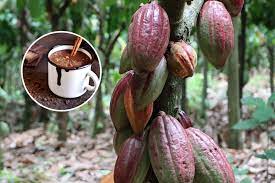Cacao, the source of chocolate, has long been revered as the “food of the gods.” Yet, the origins of this beloved crop and its journey across ancient civilizations have remained shrouded in mystery. Now, a groundbreaking study published in Scientific Reports sheds light on the spread of cacao domestication, tracing its path from the Amazon basin to regions across South and Central America over 5,000 years ago.
Led by Claire Lanaud and her colleagues, the research offers unprecedented insights into the genetic history and diversity of cacao, revealing a complex tale of cultivation, trade, and adaptation among ancient cultures.
The study delved into residues from 352 ceramic artifacts spanning 19 pre-Colombian cultures across Ecuador, Colombia, Peru, Mexico, Belize, and Panama. By analyzing ancient DNA and methylxanthine components present in modern cacao strains, such as theobromine, theophylline, and caffeine, the researchers identified traces of ancient cacao in these artifacts.
The findings paint a vivid picture of cacao’s extensive cultivation along the Pacific Coast shortly after its domestication in the Amazon basin. The presence of diverse cacao strains suggests that ancient civilizations engaged in sophisticated breeding practices, blending genetically distinct populations to adapt to new environments.
Moreover, the study unveils the interconnectedness of ancient cultures through the trade and exchange of cacao. The detection of Peruvian cacao genotypes in artifacts from the coastal regions of Ecuador and Colombia highlights the long-standing contact and exchange networks that facilitated the spread of cacao strains across borders.
This cross-cultural diffusion of cacao not only enriched the genetic diversity of the crop but also shaped the culinary and cultural practices of ancient societies. As different cultures adopted the use of cacao, they contributed to its diversification and adaptation to diverse environments.
The implications of this research extend beyond the realm of ancient history. Understanding cacao’s genetic history and diversity is crucial for safeguarding modern cacao strains against threats such as disease and climate change. By learning from the adaptive strategies of ancient civilizations, we can develop more resilient and sustainable approaches to cacao cultivation in the face of contemporary challenges.
As we savor the delights of chocolate, let us also appreciate the rich tapestry of history woven into every cocoa bean. The journey of cacao from the Amazon to civilizations across South and Central America serves as a testament to human ingenuity, innovation, and the enduring allure of nature’s gifts.
